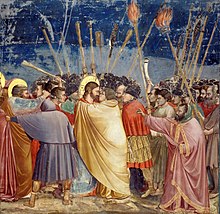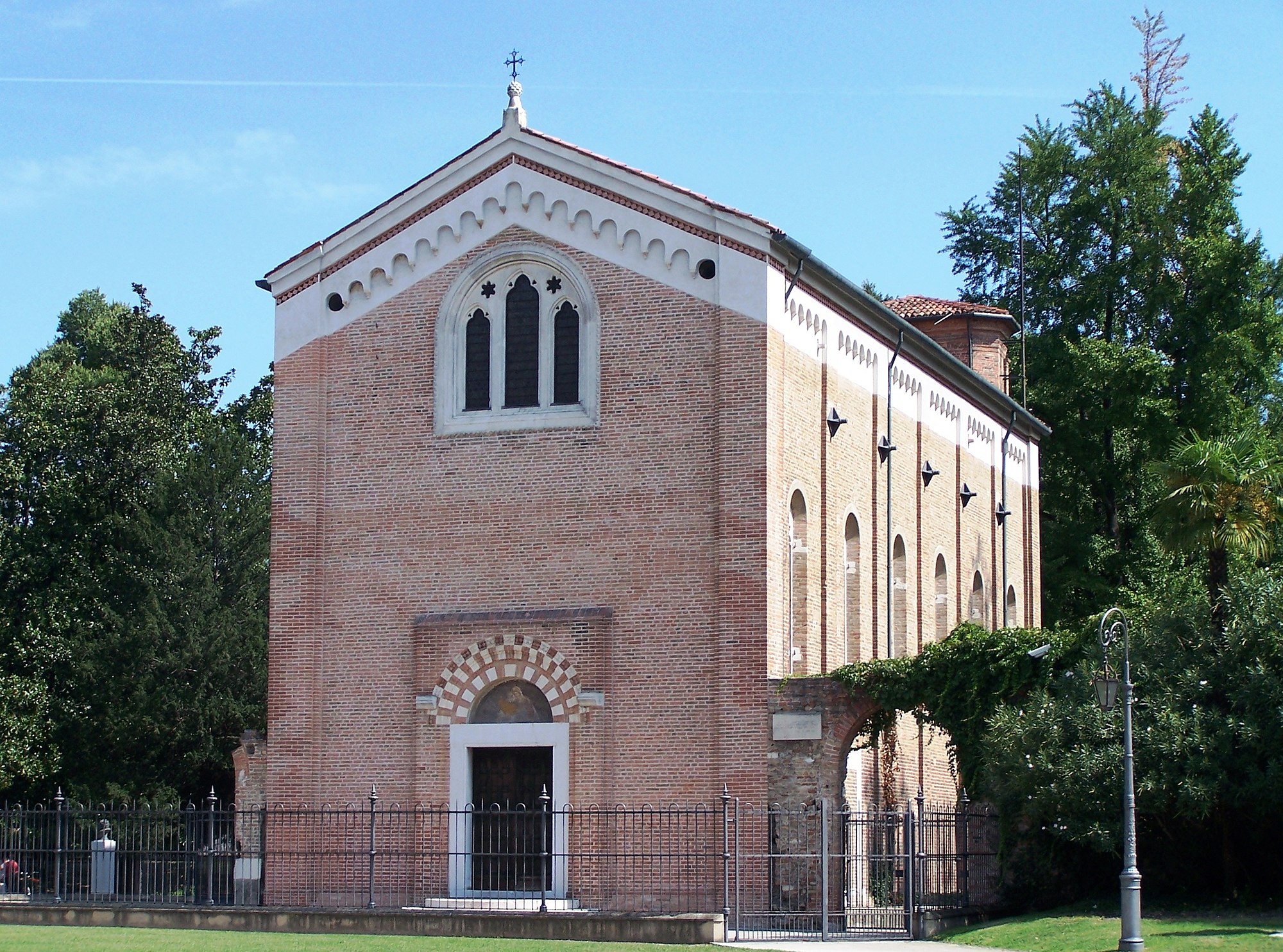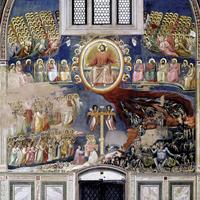More about Scrovegni Chapel
Works at Scrovegni Chapel

Contributor
Enrico Scrovegni’s dad went to Hell.
Unlike most divine judgments there’s actual literary proof, Dante names Reginaldo deep in the seventh ring. Reg actually asks Dante what a nice writer boy like him is doing chilling in a pit like that. Enrico was not gonna make his father’s mistakes, but he also wasn’t trying to skip out on the perks of being a loan shark, so he tried to buy his way into heaven by paying for this nice little chapel.
The master plan was that Enrico would build the chapel for the Virgin Mary, and she’d be so thrilled about all of the art and attention that she’d grant him “eternal mercy” by intercession. Giotto even painted Enrico into a fresco, depicting the benefactor handing a little model of the chapel to the three Marys, like a little “suggested tip” section of the receipt, but for salvation and paradise until the end of time. It wasn’t all peaches though. Nearby Augustinian monks complained about the chapel being too large, and its bells too loud. Sounds like the abbey bros were just jealous they got out-holied by a sinning banker, [foreshadowing the usurpation of the Catholic church’s financial hegemony by the power-accumulating violence of capitalism] but I’d bet on God being more into a century’s worth of abbey-brewed beer than a house that isn’t even useful for an omnipotent cloud of energy.
Scrovegni, in a classic userer’s move, was creative with his divine bribery: 2-for-1 deal it’s a chapel and a painting, all this for the price of one saved soul. The frescoes cover pretty much the entire inside surface, which means that unlike most artworks, the 21st century art pilgrim can get consumer reviews: 86% of visitors gave it five stars on TripAdvisor which is way better than the 33% the White House gets. One review docked a star because it’s pretty hard to see the higher-up frescos, but otherwise, 10/10 would recommend to a friend.
Sources
- “Attraction Review: Scrovegni Chapel.” Trip Advisor, 2018. Accessed April 19, 2018. https://www.tripadvisor.com/Attraction_Review-g187867-d269082-Reviews-S…
- “Attraction Review: White House.” Trip Advisor, 2018. Accessed April 19, 2018. https://www.tripadvisor.com/Attraction_Review-g28970-d103227-Reviews-Wh…
- Barolini, Teodolinda. “Inferno 17: Failed Flyers.” Commento Baroliniano, Digital Dante. New York: Columbia University Libraries, 2018. Accessed April 19, 2018. https://digitaldante.columbia.edu/dante/divine-comedy/inferno/inferno-1…
- Bloch, Amy. April 22, 2009. “Anne Derbes and Mark Sandona, The Usurer’s Heart: Giotto, Scrovegni, and the Arena Chapel in Padua.” CAA Reviews, 2018. Accessed April 19, 2018. http://www.caareviews.org/reviews/1242
- Harris, Beth PhD. and Zucker, Stephen PhD. “Giotto, Arena (Scrovegni) Chapel, Padua c. 1305.” Khan Academy, 2018. Accessed, April 19, 2018. https://www.khanacademy.org/humanities/ap-art-history/early-europe-and-…
- “Scrovegni Chapel Frescoes.” Artble, 2018. Accessed April 19, 2018. https://www.artble.com/artists/giotto_di_bondone/paintings/scrovegni_ch…
- Stanska, Zuzanna. March 31, 2017 “6 Things You Must Know About Scrovegni Chapel.” Daily Art Magazine, 2018. Accessed April 19, 2018. http://www.dailyartmagazine.com/things-must-know-scrovegni-chapel/
Featured Content
Here is what Wikipedia says about Scrovegni Chapel



The Scrovegni Chapel (Italian: Cappella degli Scrovegni [kapˈpɛlla deʎʎi skroˈveɲɲi]), also known as the Arena Chapel, is a small church, adjacent to the Augustinian monastery, the Monastero degli Eremitani in Padua, region of Veneto, Italy. The chapel and monastery are now part of the complex of the Musei Civici di Padova.
The chapel contains a fresco cycle by Giotto, completed around 1305 and an important masterpiece of Western art. In 2021, the chapel was declared part of the UNESCO World Heritage Site of 14th-century fresco cycles composed of 8 historical buildings in Padua city centre. The Scrovegni Chapel contains the most important frescoes that marked the beginning of a revolution in mural painting and influenced fresco technique, style, and content for a whole century.
Check out the full Wikipedia article about Scrovegni Chapel











